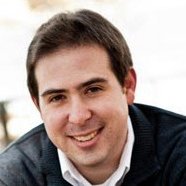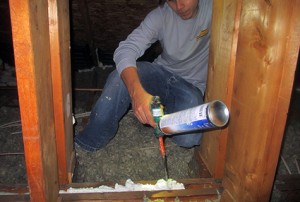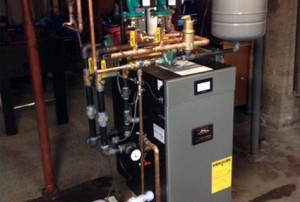Andy Frank sees the next great frontier in energy efficiency in existing single family homes. The challenge is in getting homeowners to adopt energy-saving renovations when it’s hard to see the long term benefit in cost. With his new venture, Sealed, Frank believes he’s found a formula to fix that.
As Frank sees it, a lack of consumer confidence in real energy savings is the single largest barrier to scaling residential energy efficiency. And with a round of seed funding secured – as well as yet-to-be-announced pilot programs on the horizon – Sealed is setting out to solve that problem.
“The thing that made me start Sealed was a problem I kept seeing pop up in various contexts around energy efficiency,” he says. “It’s almost an existential question of ‘what are savings?’ In the renewable space, in the energy supply space, it’s really hard to measure and believe in and trust in energy efficiency. It’s not anything tangible that you can see.”

Andy Frank, Founder, Sealed
There’s also an inherent amount of risk for the homeowner, who might see the potential for energy efficiency projects to save money or increase the comfort of their home, but can’t say for sure exactly how much money they might save each month in bills. No two homes are alike, and energy bills vary depending on any number of environmental and behavioral factors.
Sealed is based on the recognition that, no matter how much technology promises the potential for home energy cost savings, adoption would always lag without some guarantee it actually works.
Enter Frank’s mission, which is to inject consumers with confidence in cost savings by tying something tangible to energy efficiency: home improvement.
“What we’re doing at Sealed is essentially pooling that risk together, pooling that variance together, and essentially guaranteeing savings to homeowners, giving them a solid number that they can see every month,” he says. “Basically we’re taking the spread between what we guarantee and what the actual savings are. The way our business model works is we basically guarantee 75% of what we think the expected savings are actually going to be. The way we actualize that is we replace the homeowner’s energy bills with a single Sealed bill that’s guaranteed to be X% lower than what it would normally be.”
Sealed was a finalist in the 2013 Cleantech Open Global Forum held last November in San Jose, CA.
Frank founded Sealed in December 2012, after leaving Efficiency 2.0, an energy efficiency software company he’d helped start that was acquired by C3 Energy earlier that year. He recently raised $200,000 in seed funding, half of which came from an angel investor with the other half coming from friends and family. His investors are not comfortable being named at this time.
New York-based Sealed will make an announcement in the coming weeks detailing pilot programs. Frank is waiting to share additional specifics on future fundraising.

Air Sealing
Sealed will target existing single-family homes with annual utility bills of $4,000 or more. It bases its cost savings guarantee on the historical analysis of similar homes as well as its own actuarial savings model, which has real data on pre- and post-usage. Frank anticipates a typical energy efficiency job will save a homeowner 20% to 30% in annual savings, from which Sealed will take a percentage in exchange for guaranteed utility cost savings.
Ultimately, its founder sees Sealed as part of a larger energy efficiency ecosystem. The company itself isn’t going into homes to assess efficiency and install energy-saving solutions. It will partner with energy efficiency contractors, who will use Sealed’s data and analytics to project cost savings and help close sales.
Sealed isn’t looking to replace utilities, either. Following the installation of home improvements, such as home sealing and insulation, HVAC upgrades or other efficiency measures, Sealed works by pooling utility bills together and acting as the homeowner’s utility billing agent, presenting customers with a single bill representing the guaranteed promoted savings.
“For us to succeed everyone in the market needs to succeed,” Frank says. “There’s a lot of people that make money if we make money. First and foremost the homeowners who are paying lower energy bills. Obviously we’re helping contractors sell more jobs, we’re helping part manufacturers sell more stuff, we’re helping the utility companies with their efficiency goals, we’re helping local communities meet their local carbon energy goals as well.”

HVAC